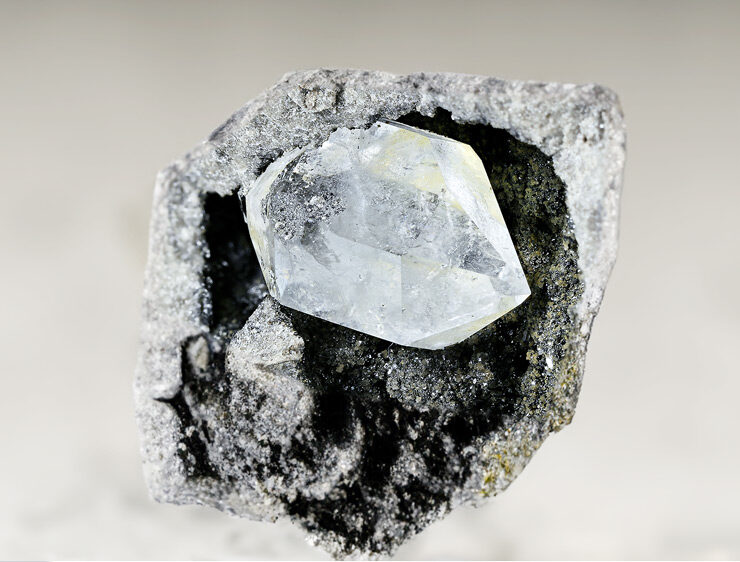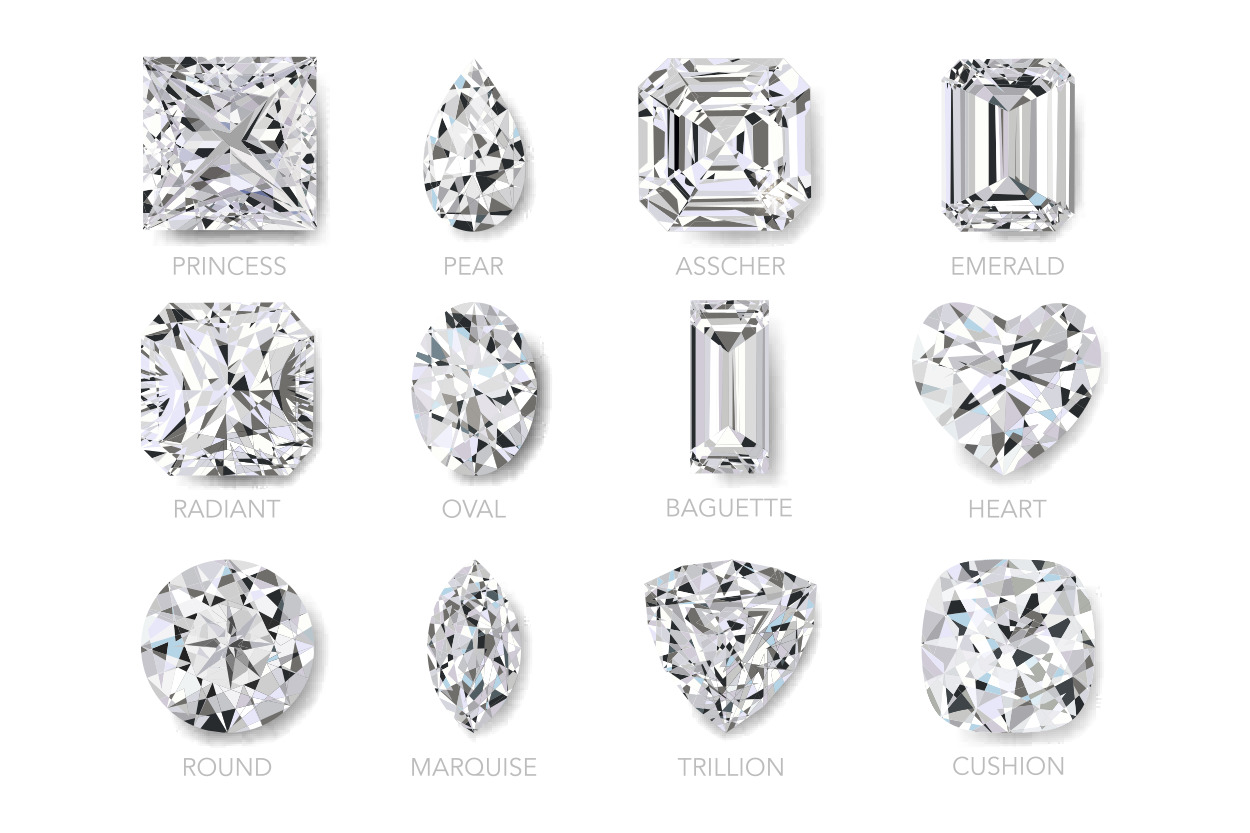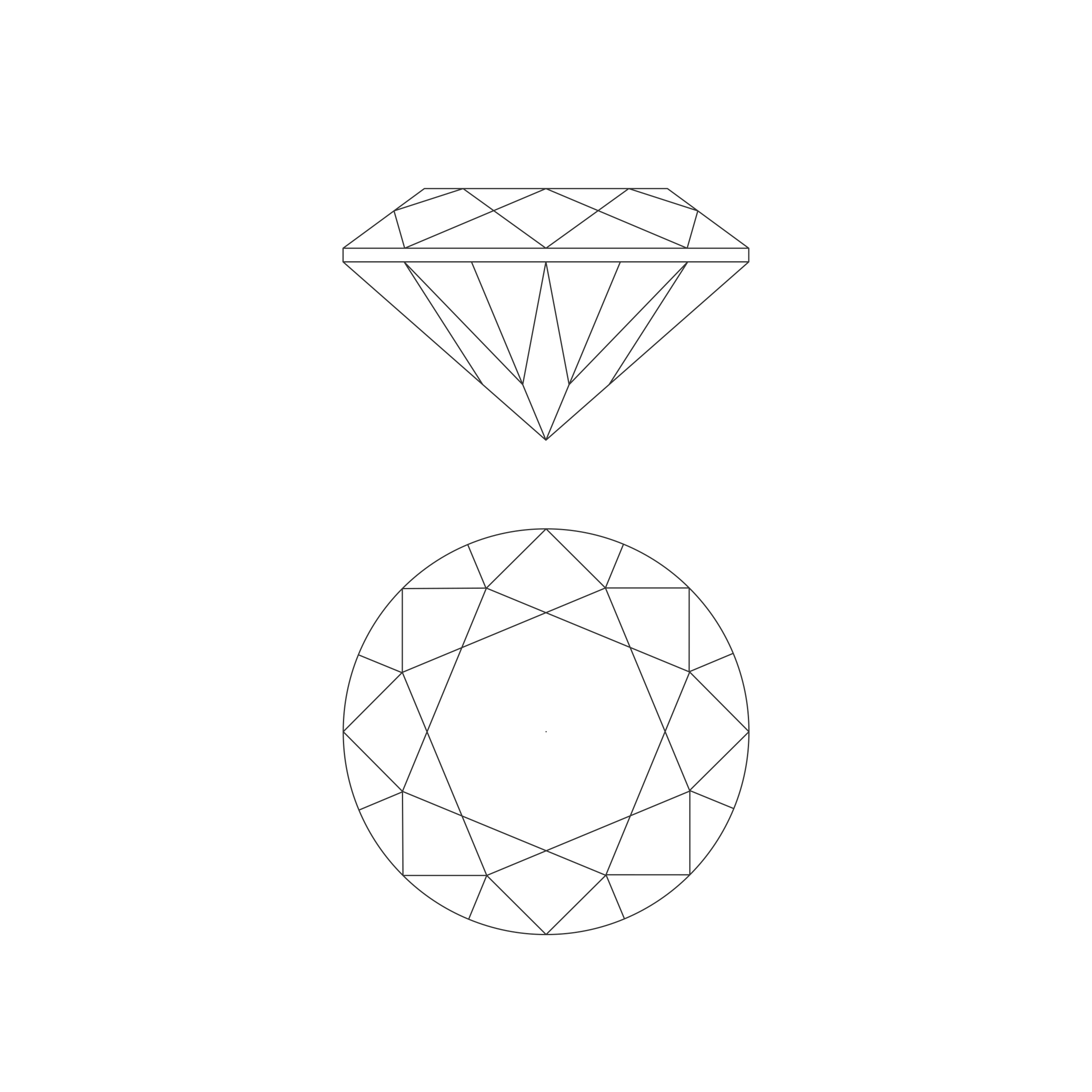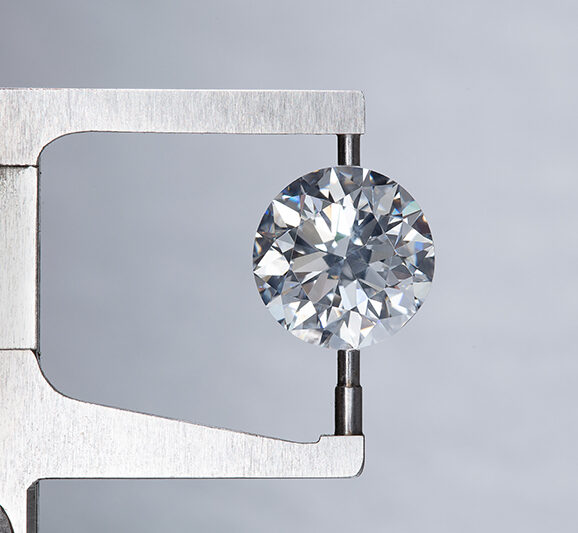Cut
The beauty of a diamond comes from the optical properties of the cut diamond.

cut
The beauty of a diamond comes from the optical
properties of the cut diamond.

TYPE OF CUTS
The fascination of optimal brilliance requires a flawless rough diamond and the perfect work of the diamond cutter. The importance of the cut is significant because it is the cut that brings out the full beauty of a diamond. There are many different diamond cuts, and a selection of them include:
BRILLIANT CUT
The classic and most common cut for a diamond is the brilliant cut, with its triangular and rhombus-shaped facets. Very often, the term "brilliant" is used to refer to a diamond regardless of its cut. However, "brilliant" specifically applies to round diamonds in the brilliant cut and assumes the authenticity of the stone. All ONE Solitaire diamonds have a brilliant cut with 57 facets. The brilliant cut consists of 1 table facet, 8 table facets, 8 upper main facets, and 16 girdle facets in the crown, as well as 8 lower main facets and 16 girdle facets in the pavilion.
The number and distribution of facets on the top and bottom of the diamond, their symmetrical arrangement, and their angular proportions determine the brilliance of a diamond, along with the size of the table and the ratio between the upper and lower parts. When light enters the diamond vertically, and the pavilion angle is set at 40.7 degrees, the light can be completely reflected back out, resulting in optimal brilliance.
The girdle, located between the upper and lower parts, acts as a separation line. Its purpose is to protect the diamond's edge from damage and
chipping. The girdle should be very fine, just visible as a bright line to the naked eye. A thick girdle, known as a "thick girdle" in the field, can negatively impact a diamond by reducing its brilliance. Light rays within the width of the girdle are refracted into the air and cannot be fully reflected with a thick girdle.
Normative data are provided for all aspects of the cut, and if these standards are not met, the cut is no longer considered excellent.
The evaluation is done using the following designations: Excellent, Very Good, Good, Fair, Poor.


POLISH
Polish refers to the craftsmanship of the surface structure of a stone. Damage to the surface, rough or frayed irregularities on the girdle should be avoided. The evaluation is done using the following designations: Excellent, Very Good, Good, Fair, Poor
SymmetrY
Symmetry characteristics are developed during the diamond cutting process. Evaluation includes the precise alignment of facet junctions between the upper and lower parts of the diamond at its girdle (the "equator" of a diamond), as well as their symmetrical arrangement and angular proportions. Deviations from the circular shape, an inclined table, an eccentric table, irregularities in the facets, wavy table edges, uneven girdle thickness, facet misalignment, or an eccentric culet (point) in the pavilion cause significant value reduction. The evaluation is done using the following designations: Excellent, Very Good, Good, Fair, Poor.
summary
In summary, the sparkle, quality, and value of a diamond are heavily dependent on the cut (proportions), polish, and symmetry.
All ONEsolitaire diamonds have the highest quality designation: "excellent".

